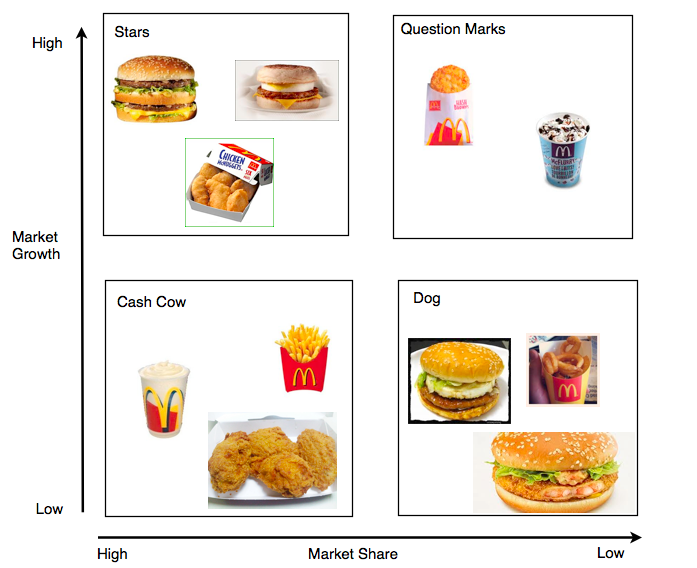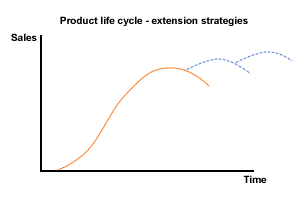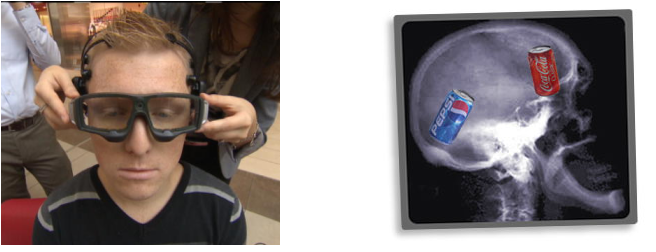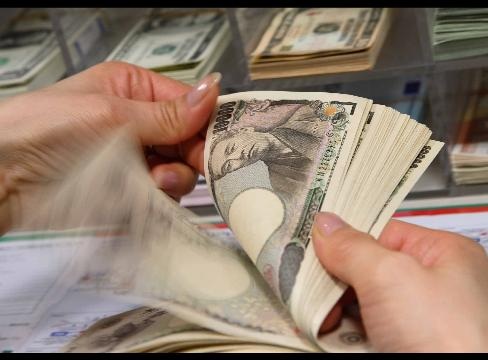McDonalds, being a leader in the fast food industry, has to accept that food trends are always and constantly changing, and that what may seem like a popular product before may well be junk the next day. When firms/companies introduce new products, they will already bear in mind that the product will one day be at the decline phase of the product life cycle, and when that time arrives companies will try to extend that products life cycle.
Here are a few strategies McDonalds can use to extend their product's life cycle 1. Make modifications to the product Modify the product in terms of adding more materials to it (extra layer of beef, fillet) or changing the materials inside it so that it will appeal to customers again. *though McDonalds must be careful not to bring significant changes to the product, or the product will lose its originality and it will just be like introducing a new product to the market 2. Reducing the price This strategy will definitely work if McDonalds wants to prolong a certain product's life cycle, as one of the most appealing factors of McDonalds burgers is price, and customers who walk in McDonalds are looking for something cheap and tasty. Lowering the price of that burger or the McNuggets will definitely bring appeal to the product. 3. Introduce new varieties to the product This strategy will help bring creativity and originality to McDonalds products. E.g. If the white ice cream is in the decline stage of the product life cycle and it is losing its appeal to customers, McDonalds can try to add different flavors to the ice cream, such as chocolate flavored ice cream or mango flavored ice cream, these new changes to the product will definitely appeal to customers and lengthen the products life cycle. Above is the diagram of McDonalds product range and shows McDonalds product items, depth of McDonalds various product lines and the breadth of McDonalds product mix. *Note: This diagram does not include all the products that McDonalds offers and all the variety of the same product it offers, this is just a brief diagram of McDonalds product portfolio. As you can see above, McDonalds has a very large collection of product items for each product line and it has significant depth in each product line. * In an average McDonalds restaurant there are 20+ burgers for your choice and they continue to invent new burgers everytime to satisfy consumers. Furthermore, McDonalds has a very broad product mix, providing products from burgers, ice cream, drinks and even salad. With the huge product range of McDonalds, advantages would be that there are more choices for the customers and they can satisfy/suit the wants of different market segments. Furthermore, with McDonalds diversification of its products and its extensive product range, it will be easier for McDonalds to grow and expand.
Being the fast food industry leader as it is, generating $6.95 billion in revenue in 2012, potential marketing objectives for McDonalds might be to 1. To grow market share by 10% in fast food market 2. Target the market segment of healthy eaters and meet their wants (creating healthier products) This article talks about an astounding scientific breakthrough, and that is the applications of neuro-marketing. The process involves wearing an electroencephalogram (EEG) cap with electrodes placed all over the consumers head, along with goggles that track eye movement. The cap is able to measure electrical impulses and the goggles are able to track where the consumer is looking when examining a product, hence researchers can immediately tell if the consumer is attracted to the product or not. This can be really useful for McDonalds as they can change their marketing strategies to properly capture the consumers attention. E.g. The use of different colors and ingredients in the advertisements of burgers.
Link to Article: http://www.cbc.ca/news/technology/story/2012/12/20/inside-your-brain-neuromarketing.html As mentioned in a previous post, Japan currently has the second most number of McDonalds in its country with over 3600 restaurants, just falling behind USA, making it a vital part in McDonalds chain of restaurants all over the world. Japan's economy is currently in a recession with deflation and other issues occurring. Recently, the Japanese government has approved a $116 billion dollar stimulus package to revive the economy. The package is estimated to boost Japan's economy by 2%,create 600,000 jobs and raise income levels in Japan. This will impact McDonalds greatly because this package will increase the consumer confidence level in Japan. The economy of Japan is in a recession and thus people will be less likely to eat out or spend money on fast food restaurants such as McDonalds. With this $116 billion dollar package, more jobs will be created and income levels will rise, when the consumers have increased amount of income and they have more confidence in the economy, they will be more willing to spend in on McDonalds instead of just eating home and being conservative.
Link to Article: http://www.bbc.co.uk/news/business-20981874 The "Labour Party" in UK are urging governments to introduce legal limits on sugar, salt and fat content in food. The Party says the "Department of Health's" voluntary agreement with food companies to make their products healthier is not working. Their argument is that NHS data indicates that one third of children in UK are either overweight or obese by the time they leave primary school. If governments do introduce legal limites on sugar, salt and fat content in food it will be a great impact to McDonalds, as all their products either contain one of the three ingredients mentioned. Brand taste is extremely important, and if McDonalds were to redesign their products according to these laws, customers may switch out or even quit McDonalds as they may not like the taste anymore. Sugar, salt and fat content are extremely important elements in McDonalds products, therefore if there are legal limits, McDonalds will need to find other ingredients to replace these so that they can make a product that satisfies the demands of the market, and that may boost production cost or research cost.
Link to Article: http://www.bbc.co.uk/news/health-20914685 The Japanese economy is on a downhill and Japan has been battling with deflation and falling consumer prices for years. According to the latest data, the core consumer prices index fell 0.1% in November 2012. This means that the prices of goods are dropping. The way the Japanese government intends to solve this is to spur domestic demand and boost domestic consumption, but this is not working as deflation is occurring, and prices of goods are dropping, therefore consumers are putting off prices to hope for a cheaper deal later on, Japan also has the highest saving rate in the world, therefore consumers are less likely to spend money in the first place. This affects McDonalds in a major way as Japan has the second most number of McDonalds in their country, just after USA with over 3600 restaurants. Since deflation is occurring/ the economy is on a downhill and Japan having such a high saving rate, people will be less likely to spend money on things such as fast food and they will be less likely to eat out. Therefore McDonalds will have a consumer drop. Furthermore, McDonalds can't appeal to consumers by lowering their prices because they still have to pay their workers, and the material they use to make their product will still be the same price and if they lower the price on their product, they will lose profit. On the other hand, they can't raise the price on their products to earn profit as the economy is under such pressure.
Link to Article: http://www.bbc.co.uk/news/business-20855924 |






 RSS Feed
RSS Feed
